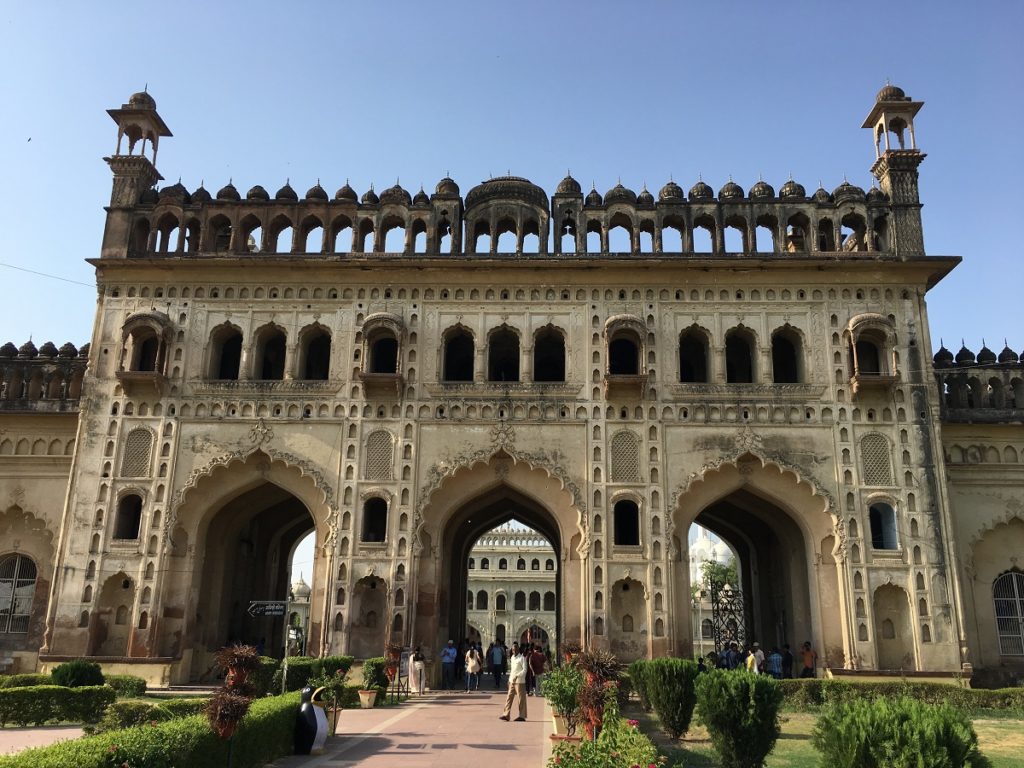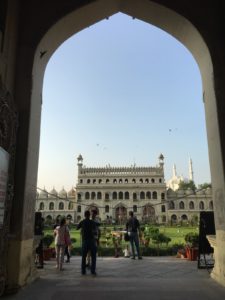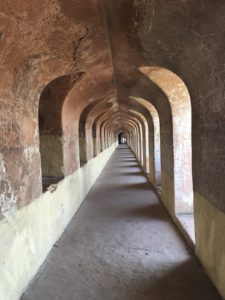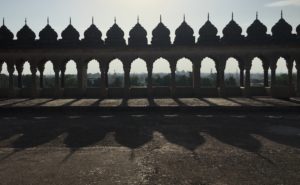The magnificence of the Bara Imambara in Lucknow
Boasting of Persian and Mughal architecture, housing novel ideas from history, this grand prayer hall is a popular tourist spot in Lucknow.
A spread of well kept lawns dominate the pale white of the surrounding structures. Archways, a mosque, a maze, a stepwell and a museum – there is much to discover in this huge compound. With two levels of entrances and many steps from the first gate to the end boundary wall, it is indeed grand. One of the various monuments in the Heritage Circle in Lucknow, this is the Bara Imambara, and it is perhaps the most famous of the heritage structures in the capital city of Uttar Pradesh.
Located in the heart of the city of Nawabs (noblemen from the Mughal era), in the province of Awadh, the Bara Imambara is a standing documentation of some bad times that Lucknow has seen and withstood.
In 1784, the royal province was hit by a famine that left the common man and even the nobles with nothing to eat. In a time of such distress, it was the construction of the Bara Imambara that fed many mouths. As is recorded, the then emperor of Awadh, Nawab Asaf-ud-Daula came up with the idea of the construction of a prayer hall or Imambara as a way of generating employment for both the elites and ordinary. It is said, that 20,000 men were employed to work on the building, which was constructed during day time by the poor and brought down at night by the elite. This was the Nawab’s idea of making sure that no one was ever out of work and that the identity of the unskilled aristocrats remained cloaked in the cover of the nights’ darkness.
After 11 years of famine and construction, the Bara Imambara reflects the finesse and ease with which it was constructed and designed. Emperor Nawab Asaf-ud-Daula had the best architects of the time come and design the grand prayer hall, the foundation of which he laid after pinning down the design by Kifayatullah, an architect from Delhi.
Still serving its purpose of a prayer hall for the Shia sect of the Muslim community during the mourning month of Muharram, the Bara Imambara is otherwise thronged by tourists, who come to witness the grandeur of this building but get lost in it.
Up and down a maze
The compound of the Bara Imambara has on its one end a bhool bhulaiya or a labyrinth, which is seemingly the highlight of any tourist’s visit to the monument. In the fleets of haywire staircases here, some leading to another, some to an exit, some to a dead end, it is easy to get lost. Although groups of tourists are permitted to wander inside independently, a tour guide, who shall unravel more secrets about the coil, can be availed at a nominal fee. Couples are not allowed to be by themselves, and for them following the footsteps of a guide is a compulsion. They can however freely roam around the China Hall, the Persian Hall and the Kharbooza Hall in the museum, and in the rest of the compound, which has the Asafi Mosque (famous for its wide steps that have also been the shooting site of some Bollywood movies) and a stepwell.
Although inaccessible to tourists, these structures in the compound become an element of the pictures taken from the roof of the monument, the way to which is via one of the staircases of the maze. From here a panoramic view of the rest of Bara Imambara and the city beyond makes tourists halt and seep in the sight.
The walls of the roof, which are arched windows are in conjunction with the rest of the Persian and Mughal architecture that the monument boasts of. Interestingly the entire monument is balanced on similar doors, windows, archways and multiple small domes, and without the support of any pillar. Outside the roof’s walls and of this monument that shelters legendary stories, history and religious beliefs, life runs a normal course on the adjoining streets with vendors, vehicles, tourists, and traffic keeping it busy.













